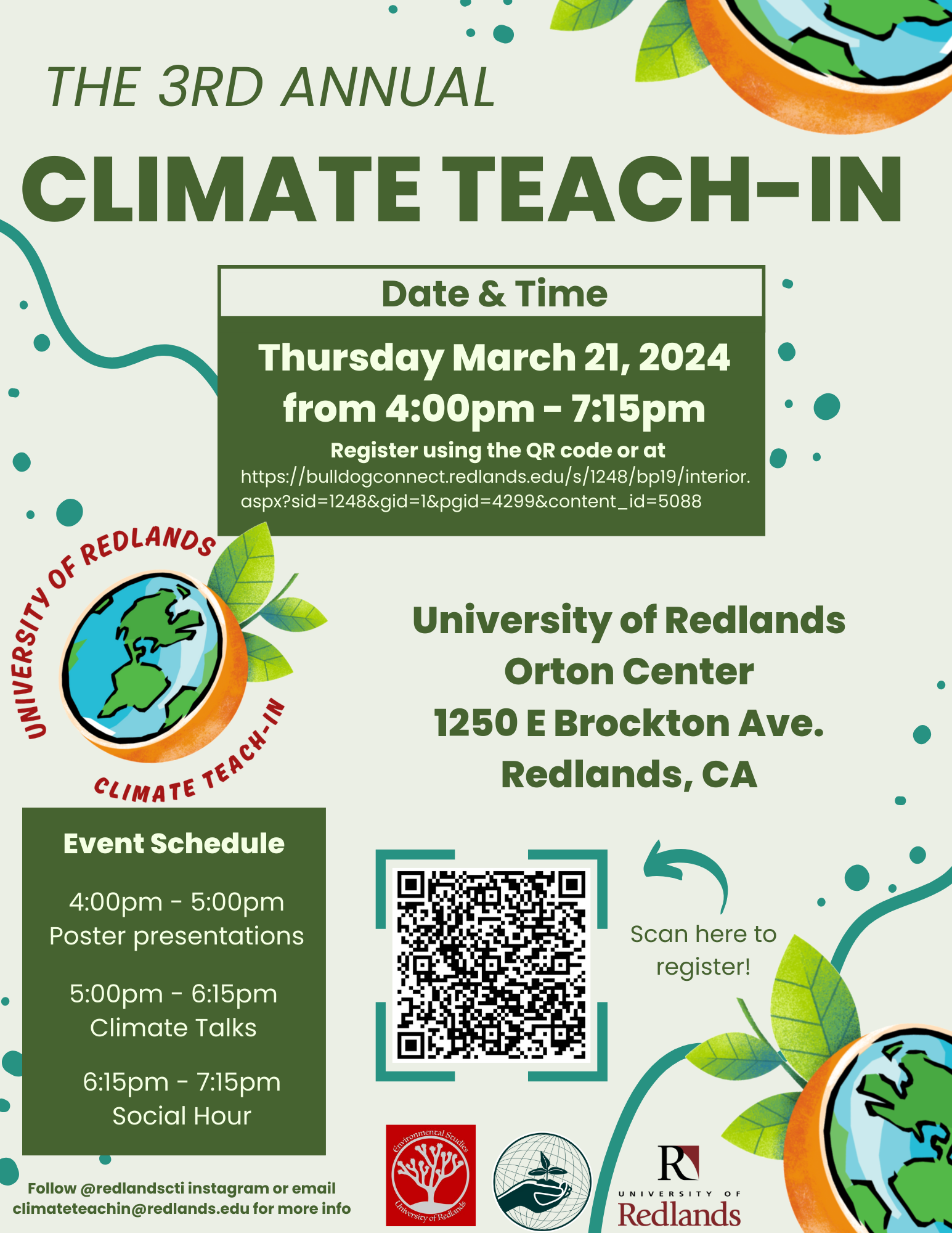University of Redlands Emergency Alert System
Alert Received: . For more information, visit: https://www.redlands.edu/alert/
During Climate Action Week (March 18-22), various events will be hosted on campus to encourage the community to think critically and actively participate in climate change dialogue and action. The Climate Teach-In on March 21 features 5-minute talks by U of R faculty, staff, and community member speakers divided into thematic panels. Speakers represent diverse academic disciplines and fields of work and contribute unique perspectives on many aspects of climate change science, impacts, solutions, experiences, and narratives.
Join us for the first annual Climate Action Week. Events include daily tabling, arts and crafts activities, tea making, a cooking class with Harvest Table, faculty talks, a film night, and more!
Learn more!
Now in its third year, the “Climate Teach-In” is a global initiative sparking real dialogue on climate change and environmental justice on campuses and in communities around the world.
Learn more and register!
Join us virtually for the Climate Talks from 5:00-6:15pm on March 21st
Wednesday, March 21, 2024
4 p.m. - 7:15 p.m. in the Orton Center
Students, faculty, staff, and community members will display posters explaining their climate change-related research, creative work, campus projects, and much more! Join this session to view their work, ask them questions, and socialize!
Join us at 5:00pm to listen to members of the Inland Empire environmental community and the University of Redlands Faculty speak about the science of climate change, the inequitable distribution of impacts, and solutions from policy, business, and social-wellbeing perspectives.
Thanks to our generous University of Redlands donors, we're able to host a social hour featuring low-carbon food and non-alcoholic beverages to give our attendees an opportunity to talk about and reflect on the challenges ahead. Space is limited, but may be expanded with additional funding and donations.